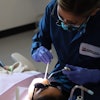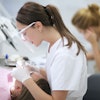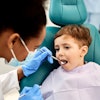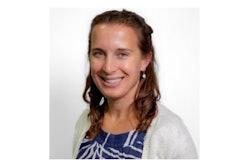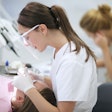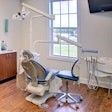Dental professionals are witnessing numerous changes in legislation as we seek to address workforce shortages without compromising public care. These legislation changes have designed innovative ways for various dental providers' scope of practice to ebb and flow so that the underserved can be reached, and these new roles are necessary. However, change takes time, and these new roles were initially designed to help patients who struggled to receive access to care.
 Tracee S. Dahm, MS, RDH.
Tracee S. Dahm, MS, RDH.
Now, we have legislation to expand access to healthcare in various states for even healthy patients, not just those who are underserved. Why are we creating more roles if we already have a position that can address the public's oral healthcare needs?
In 2005, the first state enacted legislation to recognize the dental therapist role. This role was initially designed to offer patients living in underserved areas more opportunities for dental treatment.
Alaska requires dental therapists to collaborate with dentists to discuss their patients’ treatment needs. Minnesota further defined the dental therapist role to provide an educational track for any registered dental hygienist who wished to obtain this title. Today, other states have established educational pathways.
Since Alaska first approved the dental therapist role, 10 more states have followed suit, allowing this advanced role to practice in their states. Two other states have allowed dental therapists to practice, but only on tribal lands. Twelve states in 20 years, less than one a year, hardly constitute momentum for a much-needed role.
The dental therapist has always been a well-defined role with a limited scope of practice, compliance with dental accreditation standards, 1,000 hours or more of training, licensure required, and supervision by a dentist. These standards ensure that a dental therapist is a skilled and knowledgeable clinician who can assist patients from all walks of life with a range of dental treatment needs.
Having more dental therapists would help reduce the dental workforce shortage, because they could perform various duties, leaving additional time for dentists to focus on treatments outside their scope of practice. A dental therapist can be employed in multiple clinics and office settings throughout the country.
Currently, several other states are considering adding the dental therapist role to their scope of practice. When further advancements for this role will occur remains to be seen.
Ironically, it was just over nine months ago that the ADA discussed possible advancements for the dental therapist position. The ADA resisted more opportunities for dental therapists despite its past acknowledgement of both the dental workforce shortage and the fact that dental therapists can provide preventive care.
The ADA maintained that with more states allowing midlevel dental providers, such as a dental therapist, to perform their duties would be concerning, because they may not be adequately educated or trained to provide all the necessary care expected of them.
The ADA further stated that only practicing dental therapists should graduate from accredited dental schools approved by the Commission on Dental Accreditation (CODA), as this ensures the highest level of uniform education and public safety. These requests by the ADA seemed fair, because who wouldn't want a dental professional to receive the highest educational standards and training before providing care for patients?
Now, the ADA is backing opportunities for dental professionals to receive on-the-job training to reduce the workforce shortage. Within the last month, and even in the previous few days, the ADA has demonstrated its support for dental assistants to receive on-the-job training to perform subgingival scaling, as well as for individuals to become dental hygienists through on-the-job training.
These new roles may help alleviate the workforce shortage. However, they overlook the two major concerns specified by the ADA regarding dental therapists: public safety and the need for CODA educational calibration.
How can an organization that is supposedly concerned about the education and training of dental therapists, yet will not further the path of dental therapists, not see the irony in their actions?
These new roles, which the ADA has recently supported, lack a defined educational path. It appears that the various states implementing this new legislation and roles will all be trained in a manner that they deem suitable.
As a licensed dental hygienist, I am concerned about the public’s safety and oral health in relation to these newly created roles and training. If anyone is allowed to perform specific dental duties for which they receive only minimal training, they could cause permanent harm to a dental patient. How would a patient know how well-trained their provider is?
There are workforce shortages in numerous professions across the country, which have been exacerbated by retiring baby boomers and the COVID-19 pandemic. Yet, dentistry is the only industry lowering its standards to accommodate patients.
Which is it, ADA? Do we need more education, or will any educational standards suffice to treat dental patients? How can you claim that education is paramount and then say education is not necessary?
I hope that, in the future, if more legislation changes dental scopes of practice, the next move will be made in favor of registered dental hygienists and dental therapists. Granting more freedom would give those wanting to work in locations that are often unreached greater opportunities.
Dental hygiene and dental therapy autonomy would grant dentists more time to see and treat their patients. Opening growth opportunities could help alleviate the workforce shortage. Dental professionals and the ADA should strive to expand dental access to care and promote workforce growth, which may involve incorporating the highest educational standards and training to achieve this goal.
Tracee S. Dahm, MS, RDH, is an adjunct clinical instructor for the North Idaho College School of Dental Hygiene in Coeur d’Alene, ID. She also works in private practice. Dahm has published articles in several dental journals, magazines, and a textbook. Her research interests include trends in dental hygiene and improving access to dental care for the underserved. She can be reached at [email protected].
The comments and observations expressed herein do not necessarily reflect the opinions of DrBicuspid.com, nor should they be construed as an endorsement or admonishment of any particular idea, vendor, or organization.
